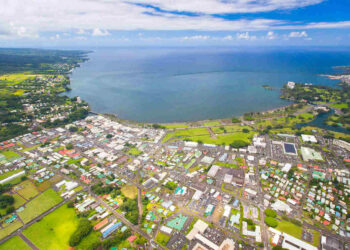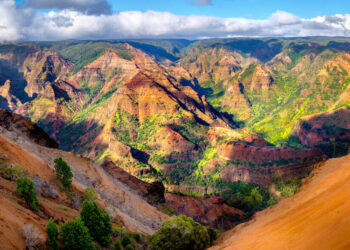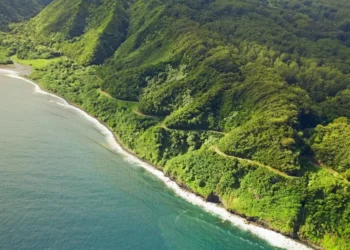San Antonio rests where its namesake river curls through broad plains rimmed by gentle rises—a city hewn from limestone and layered with time. Famed for the Alamo and its tangled heritage, it sits at a meeting of ways, where Spanish echoes, Texan spine, and today’s hum knot together. Its paths chatter with life, its weathered stones bear old wounds, and its still corners murmur tales from before the first brick fell. This ain’t a spot that just idles—it catches you, presses you to feel its long shadow and quick beat.
A Peculiar Mark: From spring through fall’s end, near 250,000 Mexican free-tailed bats flood out of Bracken Cave, some 20 miles northeast—the planet’s thickest bat swarm, a raw tie from San Antonio’s dirt to its wide dusk.
Places to Visit: An Overview
San Antonio spreads a mix of stops, each hauling its own load. The Alamo, a low-slung mission gone fort, pegs 1836’s clash—walls nicked by shot, its chapel hushed with Crockett and Bowie’s last stand. No charge to step in, it’s tight but heavy; a museum close by picks apart the scrap’s bones.
San Antonio River Walk snakes through the core—a dropped ribbon of water edged with stone walks, cypress bending low, eateries and lanterns sparking after dark. San Fernando Cathedral, up since 1738, anchors Main Plaza—its aged front glows some nights with a tale of the town cast bold.
Mission San José, south a stretch, looms bigger—rock walls thick, carvings dulled but keen, a peek at Spain’s grip from 1718. Brackenridge Park rolls out wide—300 acres of oaks, San Antonio Zoo nestled in, river cutting slow.
Market Square thrums with stands—chili dust, woven mats, mariachi riffs drifting free. The Pearl, once a beer works, now stirs shops and bites, brick and steel shined from 1881.
How to Reach
San Antonio’s no trick to find. San Antonio International Airport (SAT) hunkers 8 miles north, tying to towns near and scattered. Cabs line ready, rideshares linger, or VIA Metropolitan Transit bus (Route 5) pulls you downtown firm.
Amtrak’s Texas Eagle grinds to a brick stop near the edge, tracks clawing from Chicago’s grime to the far shore over baked flats. Greyhound rolls in a block off—near the River Walk’s buzz. Interstate 10 and Interstate 35 slash through—knot up tight; crack of day or tail end keeps it loose.
Once you’re in, it’s no fuss. VIA Metropolitan Transit threads buses round the heft of it, bikes and scooters dropped for quick jaunts. Downtown’s packed close—tread it, old grit and fresh clamor underfoot.
Frequently Asked Questions About San Antonio’s History
San Antonio’s past runs deep, a vein through its rock, and folks often dig:
What’s the Alamo all about?
A mission flipped to a fight pen—1836, 200-odd Texans held off Mexico’s army 13 days. Fell hard, but lit Texas’ breakaway fire.
Other old spots worth a look?
Mission San José—1718, walls standing stout, Spain’s mark clear. Spanish Governor’s Palace—1749, adobe low, where orders rang out.
How’s the Mexican thread run?
Thick—Spain ruled till 1821, left missions, plazas, names. Market Square and Tejano tunes keep it loud, a root that don’t fade.
Any scars still show?
Alamo’s pocked walls, sure. San Fernando’s got cracks from time. HemisFair’s Tower stands where old streets got scraped for ‘68’s fair.
When’s it hit you strongest?
Any day—the Alamo’s always there, missions quiet but firm. Fiesta in April drags it all up loud, history hollering through the streets.
Past the Plain Sight
Old Stamps
Spanish Governor’s Palace, a squat adobe off Market Square—1749, plain rooms, courtyard where power barked once. HemisFair Park, from ‘68’s big show—Tower of the Americas juts 550 feet, a glass ride up shows the flat sprawl.
Wild Patches
Government Canyon State Natural Area, west a piece—22 miles of trails, dinosaur prints sunk in creek stone 110 million years old. San Antonio Botanical Garden—38 acres, prickly spurs and oak hush, a slice off the city’s racket.
Night’s Pulse
St. Mary’s Strip, north a bit—bars and floors thump, Tejano and rock spilling out. Esquire Tavern, River Walk since 1933—dark planks, long bar, drinks poured with a tip to yesteryear.
Side Haunts
Japanese Tea Garden, in Brackenridge—stone spans, koi pools, calm from 1917. La Villita Historic Arts Village—cobbled cuts, adobe shells, crafts and quiet by the river’s turn.
Longer Trails
Natural Bridge Caverns, 25 miles north—limestone guts, spikes hanging slow, paths drop 180 feet down. Gruene, upriver a spell—dance hall from 1878, gin turned grub spot, river for floating if sun’s high. San Antonio Missions National Historical Park—four more missions past San José, strung by the water, each a slab of 1700s Spain. Witte Museum—beast bones, Tejano gear, a peek at what built this ground.
Handy Know-How
Layover Spots
Hotel Emma, at The Pearl—brewery bones, iron and hide, river near. Menger Hotel, by the Alamo—1860s brick, bar Teddy Roosevelt hit. Riverwalk Vista, downtown—plain, steps from the wet edge.
Bites to Chase
Mi Tierra Café, Market Square—Tex-Mex all hours, enchiladas and mariachi. Boudro’s, River Walk—prickly pear drinks, gulf catch grilled. Cured, at The Pearl—meat cuts, pork belly smoked slow.
When to Drop In
Spring, fall—easy air, Fiesta and rodeo strike. Winter’s mild, summer burns—bats and water keep it live.
Final Reckoning
San Antonio straddles where old blood meets new steps—stone and shout in a rugged weave. Hands you a tune, a bite, a trail—says take it. Alamo’s grim, River Walk’s kicking, past deep and wide, now firm and twitching. Bats lift, horns blow, and what’s out there stays rough and full—a Texas scar every tread marks fresh.











